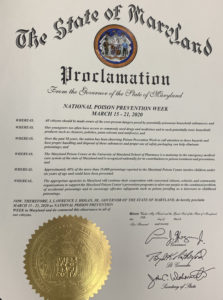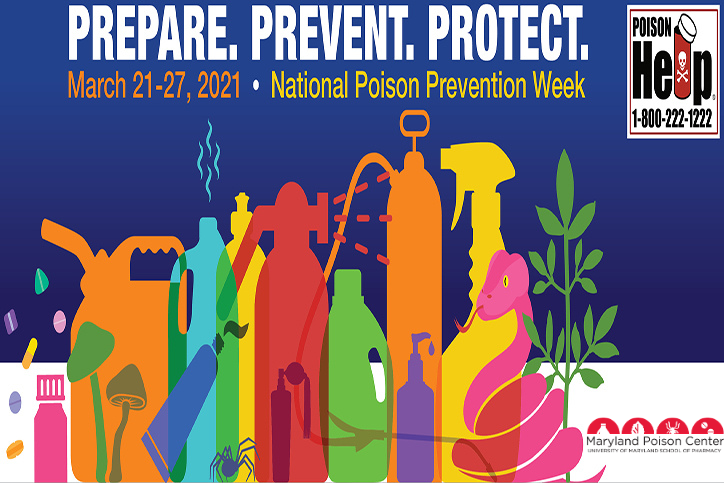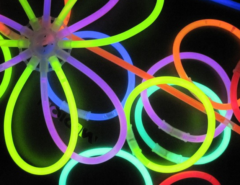National Poison Prevention Week (NPPW) has been observed in the United States since 1962. It began on February 7, 1962, when President John F. Kennedy responded to a request from Congress and proclaimed the third full week of March every year as National Poison Prevention Week. Poison centers across the country continue to observe this important week to this day.
For more than 20 years, the Maryland Poison Center (MPC) has requested the Governor of Maryland designate the third full week of March to be Poison Prevention Week in Maryland, too. Here is the proclamation from last year.

Prepare, Prevent, and Protect
The theme chosen for this year’s NPPW celebration by the American Association of Poison Control Centers (AAPCC) is “Prepare, Prevent, and Protect.”
Prepare: Before a poisoning happens, add our nationwide phone number into your mobile phone. You can text the word “poison” to 797979 for a contact card that you can save in your phone and share with friends and family. You can also display the number in your home on a magnet or sticker, which are both included in the free home poison safety packet that Marylanders can request on the MPC’s website.
Prevent: Be sure to use products safely and store potential poisons up, away, and out of sight. We suggest going through each room of your home using our poison safety checklist available in English and in Spanish to learn about the poisons found in each room and take steps to store them safely.
Protect: Use tools such as child-resistant packaging and cabinet latches, and read the label and directions before using all medicines or household products. If there are children in the home, use items that are in child-resistant packaging. This special packaging is designed to delay, not keep a child out. Remember, given enough time most children can open the package. More information is available in our previously published child-resistant packaging blog. Cabinet latches are another great tool to increase the amount of time it takes for a child to get into a cabinet. They can be used on the cabinets where you store medicines and cleaning products. Teens, adults, and older adults can help protect themselves by reading the label and carefully following directions before using any medicine or household or personal care product.
Look at the Numbers
Poisoning continues to be the leading cause of unintentional injury deaths in the United States. Poisoning is also the sixth leading cause of non-fatal injury treated in the emergency department for all ages.
In 2019, the 55 U.S. Poison Control Centers collectively responded to 2,148,141 human exposure cases. That means poison control centers, on average, managed one human exposure case every 15 seconds!
How You Can Get Involved
There are ways for everyone to get involved in NPPW:
- Check our social media pages (Facebook and Twitter) each day for new posts and share them with your friends and family.
- Share the poison center phone number (1-800-222-1222) with family and friends, and encourage them to add it to their phone contacts.
- Read and share our other published blogs about poison safety, seasonal poisons, home safety, and other timely poison prevention topics.
- Download and share our information sheets.
- Print our activity sheets for children and talk to your child about poison safety. Encourage them to stop and ask first when they find something that could be dangerous. Watch our YouTube video with your children to teach them how to stop and ask first.
As always, our poison specialists are ready to assist callers with poison information and help 24/7. Call 1-800-222-1222 if you suspect that you or someone you know has experienced a poisoning or overdose. Your call is always free and confidential.





Leave a Reply